On the evening of March 25, 1945, sensitive orders made their way down from Lieutenant General George S. Patton, commander of Third US Army, to the 4th Armored Division. His orders directed a no-notice armored raid to liberate the Americans imprisoned at Oflag XIII-B prisoner-of-war camp near Hammelburg, Germany, where Allied intelligence believed many captured American officers were being held. This population probably included Patton’s son-in-law, Lieutenant Colonel John Waters, but there was no way to be sure. Still, despite the camp’s location more than 50 miles beyond friendly lines, Patton intended to find out.
This was not the first such liberation raid to take place during World War II. In fact, General Douglas MacArthur’s troops had recently conducted four successful, high-profile raids in the Philippines to free prisoners of war. One of the raids, conducted in northern Luzon on February 1, 1945, by a force of American Rangers and Filipino guerrillas, made the front page of the London edition of Stars and Stripes the next day under the headline, “Rangers Bring ’Em Back to Life.” Historian Martin Blumenson wrote that Patton, upon hearing about these raids, reportedly said he intended to take action that would “make MacArthur look like a piker.” [1]
Finding A Commander
Patton flew to XII Corps headquarters on March 26 to meet with the corps commander, Major General Manton S. Eddy. According to his diary, Patton ordered Eddy to send an expedition “east about 60 miles for the purpose of recapturing some 900 American prisoners.” [2] Eddy was shocked, realizing that this would send part of his command east while the rest of the corps was moving north toward the Ruhr pocket.
Eddy asked Patton to reconsider, remarking that the army commander would be the target of severe criticism if the mission failed. Patton, however, had his mind made up. He told Eddy to send the mission to the 4th Armored Division, commanded by Brigadier General William M. Hoge.
When Hoge received the order, he objected to it as well. Hoge was a talented combat engineer officer who had led Combat Command B of the 9th Armored Division during the Ardennes Counteroffensive and, earlier that month, in the capture of the Ludendorff Bridge over the Rhine River at Remagen. His concerns about the mission were based on hard-fought experience gained while leading his soldiers in some of the US Army’s most successful operations.[3]
Patton’s order had few details, but it did impose significant constraints on the conduct of the mission. Hoge was to form a small task force, less than battalion-sized, and prepare for it to conduct the raid the next day. The division had just spent 36 hours in continuous combat; it needed rest and replacements. Hoge also worried that such a small task force would lack the combat power needed to complete the mission. When Patton learned of his concerns, he called Hoge directly to tell him that he had already cleared the mission with General Omar Bradley, 12th Army Group commander, and ordered him to get moving. [4]
To execute the mission, Hoge called on Combat Command B, led by Lieutenant Colonel Creighton Abrams, one of the Army’s youngest and most talented combat commanders.[5] Abrams had led the 4th Armored Division’s famous mission to relieve Bastogne and link up with the 101st Airborne Division during the Battle of the Bulge. Unsurprisingly, Abrams also questioned the wisdom of sending a battalion-sized task force so far behind enemy lines and proposed sending his entire combat command instead.[6] Hoge told him he could try to change Patton’s mind, but this was unlikely. In the meantime, Hoge told Abrams to select a commander for the task force and prepare for a visit from Patton the next morning.
Abrams selected Lieutenant Colonel Harold Cohen, commander of the 10th Armored Infantry Battalion, to lead the task force, and told him to begin planning. Cohen could do little without knowing the details of the mission and, like the rest of his men, Cohen was exhausted. He was also suffering from a debilitating case of piles. He decided to get a few hours of sleep, rising early to begin preparations for the mysterious mission.
Patton arrived at Abrams’s command post around 10:00 a.m. on March 26 with his aide, Major Alexander Stiller, and Hoge. After dispensing quickly with Abrams’s objections and refusing his request to take his entire combat command, Patton asked who would lead the task force. Abrams said he planned to send Cohen, but when he mentioned his concerns for Cohen’s health, Patton called for a doctor to join the group before heading to Cohen’s headquarters.
When they arrived, Patton ordered Cohen and the doctor into an adjacent room, where he told Cohen to drop his trousers and grab his ankles, revealing several large hemorrhoids. Apparently satisfied that Cohen wasn’t shirking his duty, Patton told him to name one of his subordinate officers to lead the task force.[7] Captain Abraham “Abe” Baum, Cohen’s battalion S-3 (operations officer), got the nod.
With this decided, Patton prepared to leave, but before he did so, he took Baum aside. Baum recalled after the war that Patton promised him a Medal of Honor if the mission was successful, to which Baum replied that he did not need a bribe. [8] Patton left Stiller behind so he could accompany the task force, reminding the major that Baum would be in charge even though Stiller outranked him.
Task Force Baum
Stiller briefed Abrams and Baum on the mission, but the added details he provided did not alleviate their concerns. As Patton had insisted, Baum’s task force was quite limited in size and less than a battalion in strength. It consisted of 314 men, 16 tanks, 28 halftracks, and 13 other vehicles. This amounted to a mechanized infantry task force comprising an infantry company in halftracks, a company of Sherman medium tanks, a platoon of light tanks, and a command and support element from Cohen’s 10th Armored Infantry Battalion.
These were seasoned, battle-hardened troops. The tanks were from part of Abrams’s old command, Company C, 37th Tank Battalion, famous for being the first unit to reach Bastogne. In contrast to the professionalism with which Abrams and Baum approached the mission, Stiller said he would be going along just “for the thrills and laughs.” He failed to mention that Patton had asked him to go because he knew Waters and could identify him for the task force.[9]
Stiller overlooked or shrugged aside other key factors. When Cohen pointed out that their vehicles did not carry enough fuel to make the round trip of over 100 miles, Stiller suggested they take extra gas cans and try to capture fuel during the mission. As for how to transport hundreds of American POWs back across enemy lines, Stiller said they could capture enemy vehicles along the way and use them.
There was even more unwelcome news. Soon after launching the raid, Baum’s forces would be beyond the range of supporting artillery, and the task force would have no dedicated air support. Navigation would also be a challenge: Not only did Stiller have just 17 basic road maps to distribute among the task force, he also did not know the location of the camp in relation to Hammelburg. Stiller suggested that Baum’s troops would have to interrogate German civilians to learn the location of the camp. Such a lack of valuable intelligence was a major problem; risky missions like deep raids depend on careful planning and rehearsal for success and require speed in execution.
The Mission Begins
From the start, the mission was incredibly difficult. Abrams and Cohen ordered Captain Richard Pancake, commander of Company B, 37th Tank Battalion (medium tanks), and Captain Adrian Tessier, commander of Company B, 10th Armored Infantry Battalion (infantry in halftracks), to help Baum’s task force penetrate enemy lines. They would attack the small town of Schweinheim, just south of Aschaffenburg, clearing the way for Task Force Baum to move quickly through the town. Schweinheim was reported to be lightly defended, and once through the town, Baum would be only eight miles from the road to Hammelburg. Still, it was very risky for armored units to move through towns at night, given the constricted roads and plentiful places for the enemy to hide. Even with friendly forces opening the way and securing their flanks, this would be a challenging task.
The whole plan relied on getting Baum through the town quickly, ideally undetected, so his task force could make the rest of the trip under cover of darkness. This was not to be. Pancake and Tessier moved out at 6:00 p.m. on March 26, but they found Schweinheim much more strongly defended than they were told to expect. Before long, Tessier’s infantry found themselves embroiled in a slow, house-to-house fight. Meanwhile, Pancake’s column of Shermans headed down the town’s half-mile-long central road, but only 200 yards into the town, a German antitank rocket disabled the lead tank, blocking the road.
While Task Force Baum waited a short distance away, the fight in Schweinheim intensified. Hours went by. Finally, at 11:00 p.m., Stiller casually remarked to Baum that they were behind schedule. Baum, growing increasingly frustrated, finally asked Stiller why Patton was so determined to rescue the prisoners at Oflag XIII-B. Stiller admitted that Patton’s son-in-law was among the prisoners; Baum, furious, considered calling off the raid, but he had orders and knew it was his duty to execute them to the best of his ability.
At 11:30 p.m., Baum told his men to prepare to move. Meanwhile, he drove his jeep to Schweinheim and found Pancake and Tessier, who told Baum they were still meeting strong resistance and would need at least another hour to clear the town. Baum said he could not wait any longer. He told the two captains to pin down the enemy and try to keep the road open, then returned to his task force and led them into the town. Somehow, the task force made it through the town with no losses, but by the time they reached the highway to Hammelburg, it was already 2:30 a.m.
When the sun began to rise, Task Force Baum was still more than 35 miles from Hammelburg. Soon, the GIs encountered German troops at Gemünden, the site of a large German rail complex. The Americans kept moving, firing on troops and rail cars as they passed. Next, they ran into enemy troops at a bridge and were drawn into an engagement. Baum was shot in the hand while his task force tried to force a crossing. Before long, however, the enemy disabled one of his tanks and then blew the bridge. Baum had to find another route.
German Resistance
The situation was growing increasingly perilous: Baum and several of his men were wounded, and he had lost two tanks, plus two officers and 18 men killed or wounded. Now he had to turn his column around and use back country roads, with German troops moving to interdict his route. Still, Baum continued to push toward Hammelburg, and soon his troops managed to capture German soldiers along the way who told the Americans they knew of an alternate route.
By mid-morning, Task Force Baum was about 10 miles from Hammelburg when a German reconnaissance plane spotted the column. Baum knew that any hope of surprise was lost, and the longer his task force remained behind enemy lines, the more German troops would arrive in the area. Baum ordered his men to keep moving. Relying on hastily gathered intelligence, Baum finally reached the outskirts of Hammelburg.
Oflag XIII-B was just two miles south of the town, but it was now the afternoon of the 27th: Baum’s task force was exhausted and low on fuel, and he would soon learn that the enemy was lying in wait. A veteran Panzerjäger unit had set up its eight Elefants—vehicles with an 88mm antitank gun mounted on a panzer chassis—along the highway leading from Hammelburg to the POW camp. The Elefants fired on Baum’s column as it approached the camp. A melee ensued in which the Germans disabled two medium tanks, a light tank, five halftracks, and a jeep before breaking off the engagement and withdrawing.
Baum had finally reached Oflag XIII-B. He quickly saw that the camp housed far more prisoners than he was told to expect. In addition to several thousand Serbian officers, there were over 1,300 American officers imprisoned there. Baum ordered his troops to charge the camp, knocking down the fence and causing some of the guards to flee. Others resisted, and sporadic small arms fire broke out; in the confusion, some of Baum’s troops mistook the Serbian prisoners for German troops.
The camp commandant tried to broker a ceasefire, sending a small party that included Waters, Patton’s son-in-law, to negotiate. As they walked from the camp toward the task force, a German guard fired his rifle at the group, seriously wounding Waters. As the camp’s defenses finally broke down, some GIs took Waters to the camp hospital, where an imprisoned Serbian military doctor treated his wound.
The Return Trip
Meanwhile, Baum considered his next move. With the few vehicles he had left, Baum estimated that he could transport just 200 men, so he decided they would evacuate only field grade officers (major and above). Many of the prisoners were in poor shape and needed medical attention. Baum’s men tried to load them in the remaining halftracks, but some were so weak from malnourishment that they opted to remain at the camp. Waters’s wound prevented him from walking, so he stayed back as well.
By 8:00 p.m., Task Force Baum was ready to begin the return trip. The small column of vehicles tried to navigate home in the dark of a moonless night, unaware that they were approaching an ambush. Noncommissioned officers from the German Infantry Combat School in Hammelburg struck the lead Sherman with an antitank rocket. In the confusion, the American crew abandoned their tank but left it running. A Germans soldier climbed in the tank and drove it off the route, using its radio to lure more tanks into the trap. Soon the enemy had destroyed four Shermans, forcing the rest of the task force to retreat toward the camp.
Assessing the situation, Baum realized he was now too low on fuel to make the return trip to friendly lines. He decided to pause until daylight so his troops could find some fuel or, more likely, simply cover as much ground as possible before being forced to abandon their vehicles and move the rest of the way on foot. At this point, most of the wounded officers and men realized they would not be able to make it back and decided to stay at the camp.
The remnants of Task Force Baum began to move out again early on the morning of March 28. They were soon engaged from all directions by German troops that had surrounded their position in the night. Every remaining vehicle in the task force was lost to German fire. Baum gave the order “every man for himself,” as individuals and small groups tried to escape, but most, including Stiller, were rounded up by German troops. Baum lost 32 men killed in action, and 247 were wounded, reported missing, or taken prisoner. Only 35 of Baum’s troops made it back to friendly lines.
'Every Man for Himself'
Unsurprisingly, the unsupported mission ended in complete failure. Baum managed to escape into the woods, but before long, a German soldier spotted him and shot him in the groin. He was taken to Hammelburg, where he received medical treatment from the same Serbian doctor tending to Waters. Many of the prisoners were evacuated to the east after the raid, but because of his wound, Waters remained at the camp. Baum, Waters, and Stiller were rescued just nine days later, April 6, when troops from the 14th Armored Division liberated the camp. Patton later awarded Baum the Distinguished Service Cross, but Baum remained bitter and took the losses personally.
It was not until after the liberation of Oflag XIII-B by the 14th Armored Division that General Dwight D. Eisenhower learned of the disastrous raid. Predictably, Patton’s latest indiscretion made him furious. Eisenhower reported to General George Marshall on April 15:
“Patton’s latest crackpot actions may possibly get some publicity. One involved the arbitrary relief of a censor (over whom he had no authority whatsoever) for what Patton considered to be an error in judgment.Then again, he sent off a little expedition on a wild goose chase in an effort to liberate some American prisoners. The upshot was that he got 25 prisoners back and lost a full company of medium tanks and a platoon of light tanks. Foolishly, he then imposed censorship on the movement, meaning to lift it later, which he forgot to do. The story has now been released and I hope the newspapers do not make too much of it." [10]
Patton later insisted that he ordered the Hammelburg raid as a diversion and did not know that Waters was imprisoned at the camp. Some accounts give credence to Patton’s version of events, but his own records speak for themselves. On March 25, Patton wrote to his wife, Beatrice, “We are headed right for John’s place and may get there before he is moved.” He went on, “Hope to send an expedition tomorrow to get John.”[11]
Less than a week later, after learning of the raid’s failure, Patton reflected on the disaster and—at least partially—accepted blame. Patton wrote in his diary on March 31: “So far I have only made one mistake, and that was when I lost two companies of the 4th Armored Division in making the attack on Hammelburg. I made it with only two companies on account of the strenuous objections of General Bradley to making any [effort] at all. Had I sent a combat command as I had first intended to do, this mistake would not have occurred.” [12]
Footnotes
- [1] Martin Blumenson, The Patton Papers, 1940-1945 (Boston: Houghton Mifflin, 1974), 665.
- [2] Blumenson, Patton Papers, 665.
- [3] Hoge had a long and distinguished career, reaching the rank of General and ultimately serving as Commander, US Army Europe.
- [4] After the war, Bradley denied having prior knowledge of the raid, but his own aide’s diary contradicts this. Richard Baron, Major Abe Baum, and Richard Goldhurst, Raid! The Untold Story of Patton’s Secret Mission (New York: Dell, 1981), 6, Kindle; Omar N. Bradley, A Soldier’s Story (1951; repr., New York: Modern Library, 1999), 542.
- [5] Abrams later served as the US Army Chief of Staff, and the Army’s modern-day main battle tank bears his name.
- [6] A combat command was a brigade-sized force of about 4,000 men and 150 tanks, with organic artillery and other supporting units. A force this size would be far more likely to survive a multi-day raid deep behind enemy lines than a small task force organized from one of the battalions in the combat command.
- [7] After the war, Baum, a Jewish officer, said he believed it was Patton’s antisemitic streak that led him to doubt whether Cohen, also a Jew, really had piles. Abe Baum Oral History.
- [8] Patton awarded Baum the Distinguished Service Cross after the raid.
- [9] Blumenson, Patton Papers, 668-69.
- [10] Alfred D. Chandler, Ed., The Papers of Dwight David Eisenhower: The War Years, Vol. 4 (Baltimore: Johns Hopkins Press, 1970), 2617. Eisenhower reported the loss of only a company of Sherman tanks and a platoon of light tanks, indicating that Patton downplayed the actual scale of the disaster.
- [11] Blumenson, Patton Papers, 664-65.
- [12] Blumenson, Patton Papers, 668.
Additional Reading:
- Richard Baron, Major Abe Baum, and Richard Goldhurst, Raid! The Untold Story of Patton’s Secret Mission (New York: Dell, 1981).
- Abraham “Abe” Baum Oral History
- “Remembering Bob Zawada, WWII Veteran and Museum Volunteer” [Bob was part of Task Force Baum]
- Lloyd Burns and Samuel Jenkins Oral Histories [prisoners at Hammelburg POW camp]
Mark T. Calhoun, PhD
Mark T. Calhoun, PhD, is a former Senior Historian at the Jenny Craig Institute for the Study of War and Democracy.
Cite this article:
MLA Citation:
APA Citation:
Chicago Style Citation:
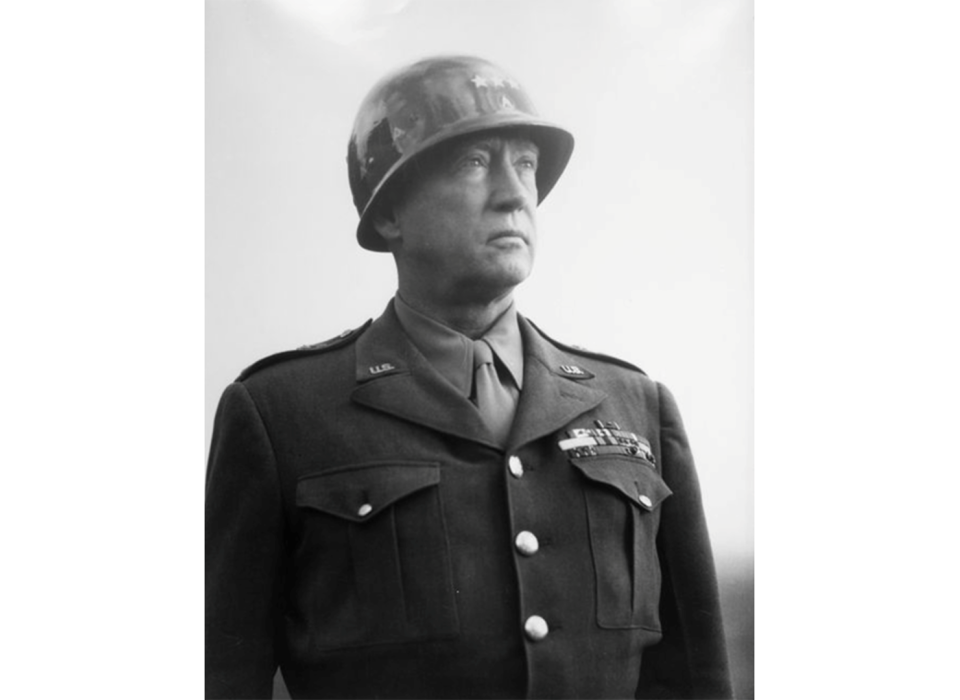

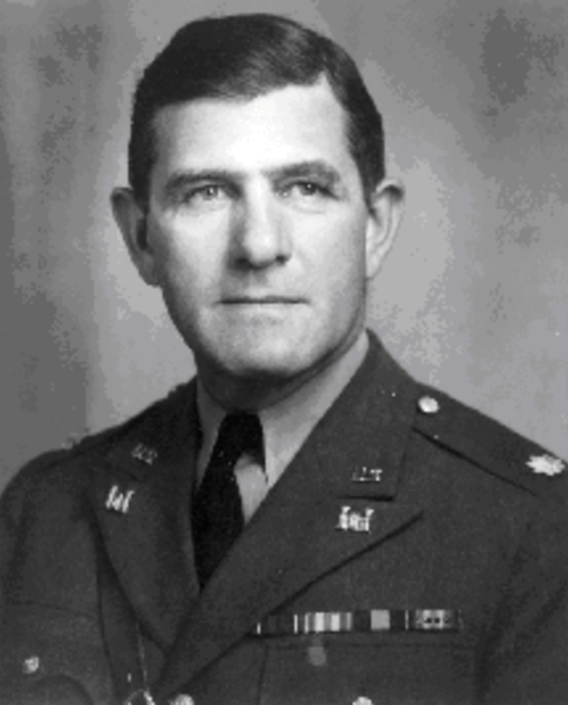


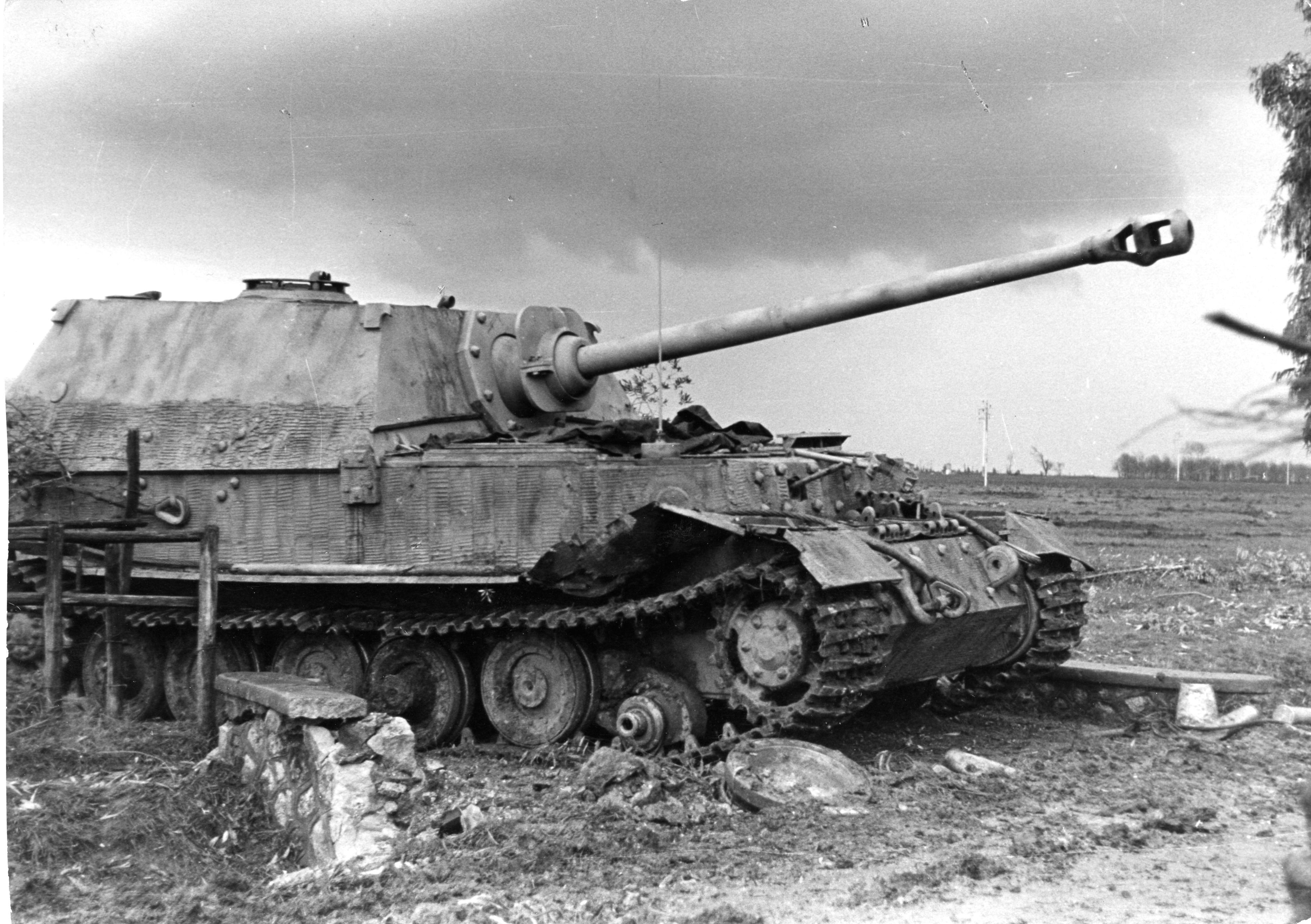

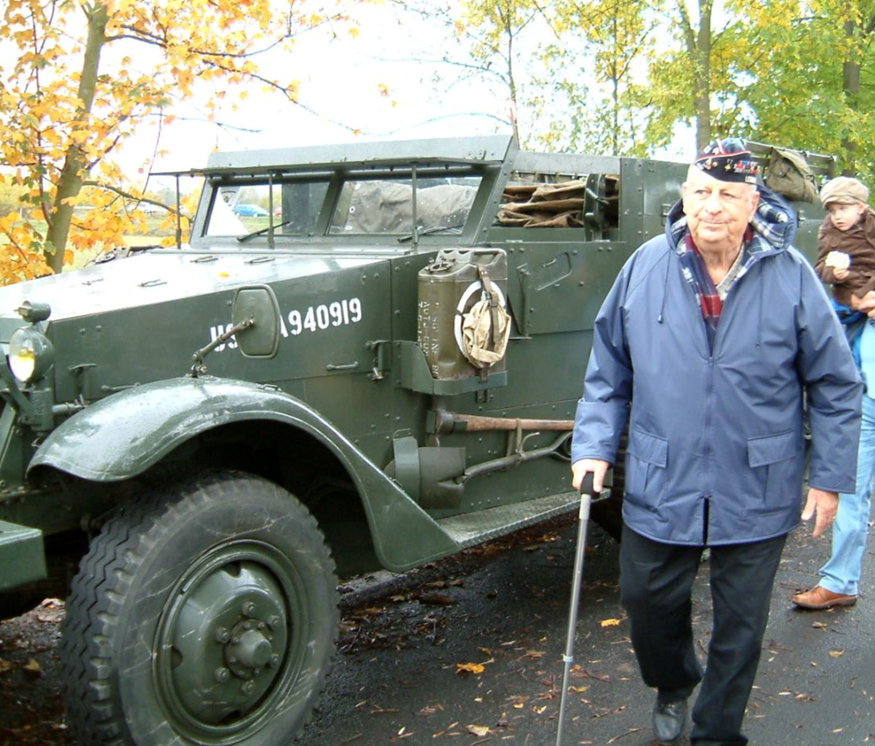
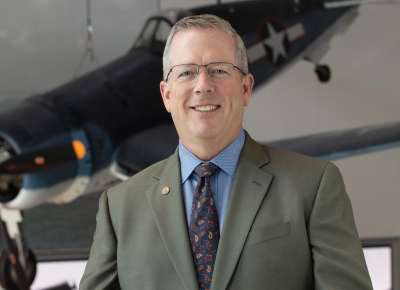
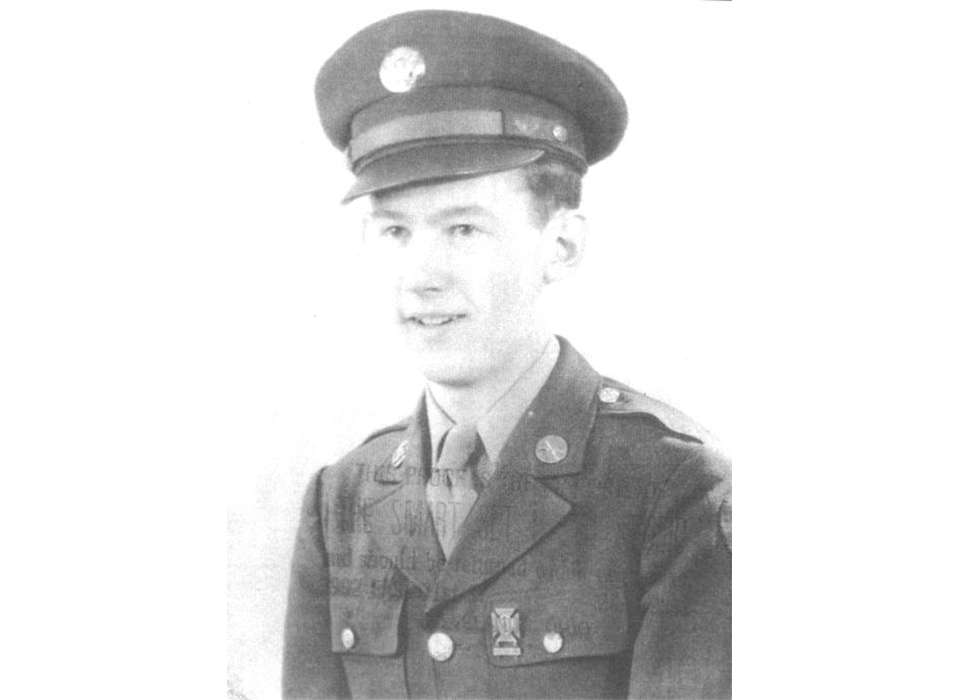



![Max Fuchs, New York City cantor, sings as Rabbi Sydney [sic] Lefkowitz, Richmond, VA, conducts the first Jewish services from Germany.](/sites/default/files/styles/max_650x650/public/2025-10/image1.jpg)



